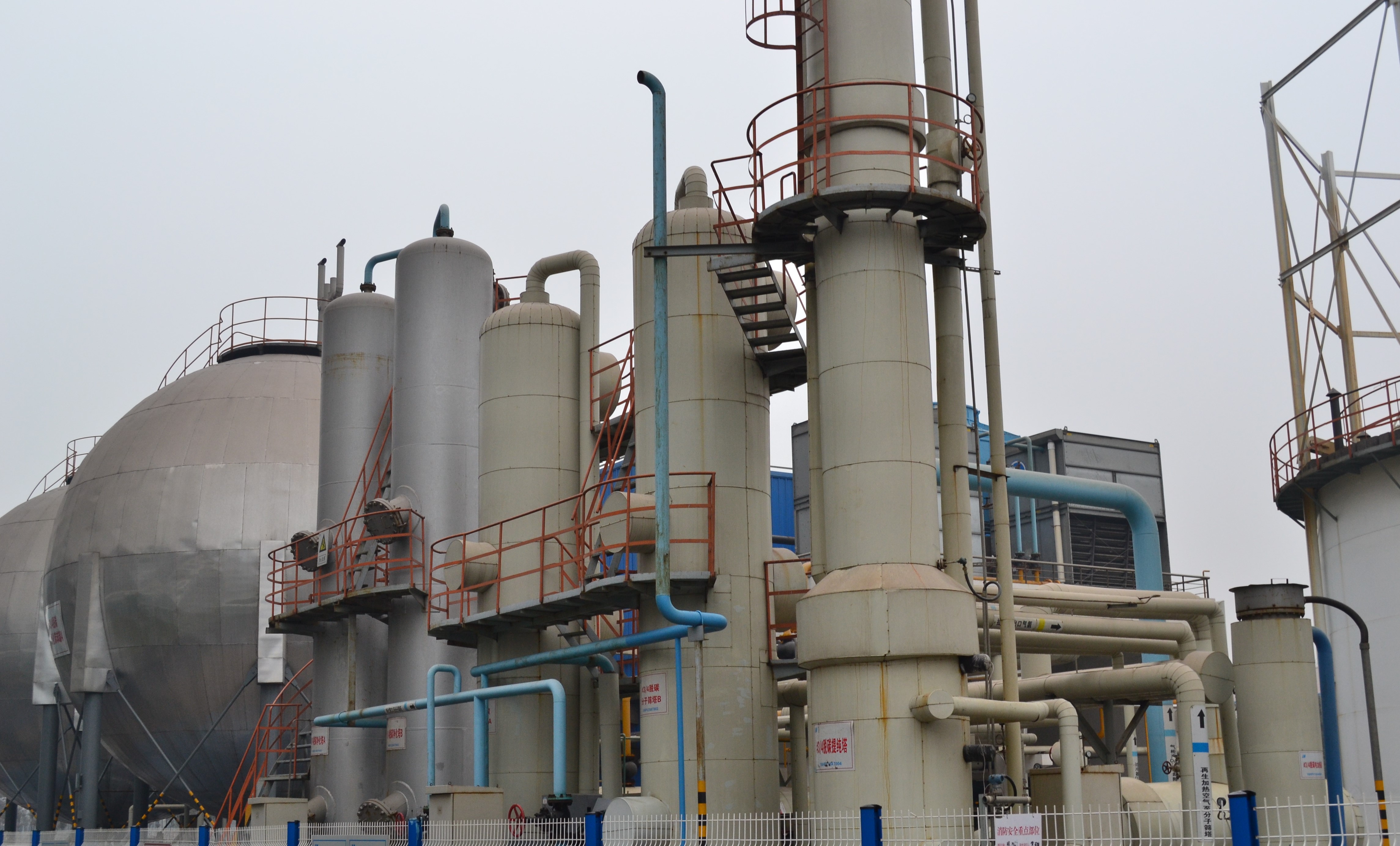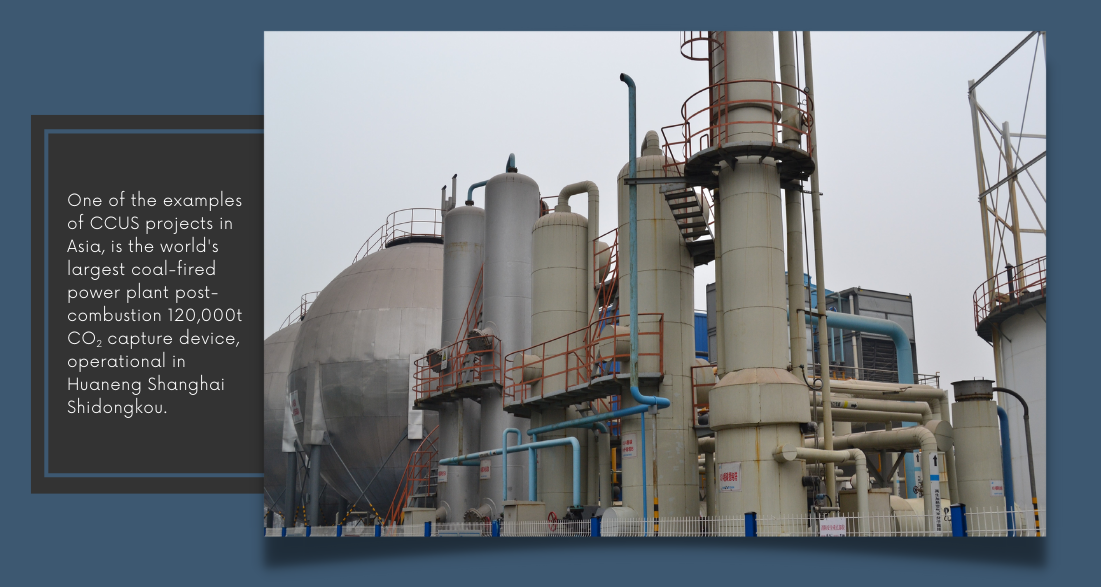There is a growing momentum of large-scale carbon capture and storage (CCS/CCUS) technology development in Asia. This momentum is supported by China’s plan to attain carbon neutrality within 40 years time.i Other countries like Japan, Indonesia, and South Korea are also starting to pursue carbon dioxide (CO2) emission reductions, through exploring opportunities to accelerate deployment of large-scale CCS.ii
Some examples of interest in CCS projects emerging across Asia, include:iii
- the Japanese Government launched the Asia CCUS Network to support capacity development and promote knowledge sharing, on top of the current Joint Credit Mechanism to support such collaborative projects.
- With the prioritization from COP26 to phase down unabated coal/fossil, a few Asian countries are taking significant steps towards moving from coal to clean power.iv For the first time, China through it’s Five-Year Plan (its 14th) includes large-scale CCUS demonstration projects.
- the Australian Government announced new funding to support CCUS projects and hubs, through significant regulatory change, including creating the first financial incentive scheme for CCUS-specific tradeable CO2 credit in the Asia Pacific region.
CCS Supporting Net Zero in the Asian Industrial Sector
With the recognition of the critical role for CCS in reaching net zero targetsv, Asian countries are also looking to develop, and deploy, CCS in their industrial sectors, for example:
- Sinopec started constructing China’s first one million tonnes per annum (Mtpa) CO2-enhanced oil recovery (EOR) project with a hub potential near an oilfield, capturing CO2 from a chemical complex. BHP and China Baowu Steel Group are cooperatively supporting research into CCS application for steel production process.
- The first regional offshore CCS hubs projects are emerging in Malaysia and Indonesia; however, the CCS legal and regulatory frameworks are still being developed. The proposed hubs have the potential to store CO2 emissions from gas processing, power stations, and other emitting sectors, as well as from other countries in Southeast Asia and the broader Asia Pacific region.
- Japan as well as Korea continue to be a regional driver of CCS, promoting regional collaboration and exploring low-carbon energy exports. Additionally, value chains potential associated with CCS are being spearheaded between Japan and eastern Siberia, Middle East, and Indonesia. Japan’s first full-chain CCS Project, the Tomakomai CCS Demonstration Projectvi, displays the safety and reliability of CCS technology for offshore CO2 storage in an earthquake-prone country.

Within four months of operation, 179 Mt of CO2 emission allowance changed hand at a price up to C$10 (RMB 54), which is predicted to increase by about C$2 (up to RMB 65) by the end of 2022. It is predicted that carbon trading in China might evolve into an alternative investment with a market size of C$100 billion (RMB500) when the carbon price exceeding C$40 (RMB200) per tonne in the near future.vii
After announcing to stop financing overseas coal-fired power plants and coal mining,viii before the year end of 2021, China issued its first batch of low-cost loans worth 85.5 billion yuan (US$13.41bn) to financial institutions to reduce carbon emission as the country seeks to meet its target of achieving carbon neutrality by 2060. The central bank provides financial institutions with 60% of the loan principal, which is used for carbon emission reduction at a one-year lending rate of 1.75%.ix
Advancing Practical CCS Knowledge
Research and innovation will continue to transform how energy is used and produced, as well as how essential industrial products such as cement and steel are created – all of which are needed to sustain the economy and society in a civilized ecology for years to come. A cooperative and consolidated effort is needed to advance large-scale CCS to support globally goals for net-zero emissions. To that end, it is imperative to build on, and transfer the expertise and understanding from large-scale CCS early mover projects that have taken place in countries such as Canada. The International CCS Knowledge Centre (Knowledge Centre) offers expert guidance and technical know-how from the operations at SaskPower’s Boundary Dam 3 CCS Facility, the development of the 2nd generation CCS feasibility study, at SaskPower’s Shand Power Station (Shand Study), and the recently completed a feasibility study for the full-scale application of CCS on a cement plant at the Lehigh Hanson Cement Plant (Lehigh) in Edmonton, Alberta. (Stay tuned for the public release of the Lehigh Edmonton CCS Feasibility Study.)
While the transfer of technical knowledge is critical for advancing large-scale CCS initiatives, so are the learnings and recognition of the importance of definitive policy support and investment. The Knowledge Centre is well positioned to provide such guidance and support in these areas. Leveraging this know-how could support the momentum for large-scale CCS in Asia – signaling a positive step towards addressing global targets for the ambitious Paris Accord.
References
i Department of Earth System Science, Tsinghua University (2020) Anchoring to Achieve the Goal of “Peak Carbon Dioxide Emission and Carbon Neutrality”——Chinese Universities are Starting the Green Battle-Department of Earth System Science,Tsinghua University
ii IEA (2021),?Carbon capture, utilisation and storage: the opportunity in Southeast Asia, IEA, Paris https://www.iea.org/reports/carbon-capture-utilisation-and-storage-the-opportunity-in-southeast-asia
iii Global CCS Institute (2021):?Global Status of CCS 2021 (https://www.globalccsinstitute.com/wp-content/uploads/2021/11/Global-Status-of-CCS-2021-Global-CCS-Institute-1121.pdf)?
ivUNFCCC News (2021) ”End of Coal in Sight at COP26” https://unfccc.int/news/end-of-coal-in-sight-at-cop26
v Global CCS Institute (2021):?Global Status of CCS 2021 (https://www.globalccsinstitute.com/wp-content/uploads/2021/11/Global-Status-of-CCS-2021-Global-CCS-Institute-1121.pdf)?
vi Japan CCS (2021) “Tomakomai CCS Demonstration Project” https://www.japanccs.com/en/
vii Bloomberg. (2021) “China to Stop Building New Coal-Fired Power Projects Abroad” https://www.bloomberg.com/news/articles/2021-09-21/china-to-stop-building-new-coal-fired-power-projects-abroad
viii South China Morning Post. (2022) “China’s Emissions Trading Market Likely To See Expansion, Rising Carbon Price in 2022, Say Analysts https://www.scmp.com/business/china-business/article/3162702/chinas-emissions-trading-market-likely-see-expansion-rising
ix Capital.com. (2021) PBOC Issues First Low-cost Loans to Support Carbon Emission Cut https://capital.com/pboc-issues-first-low-cost-loans-to-support-carbon-emission-cut
